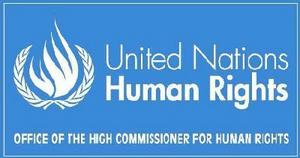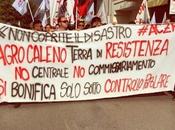

Now that Qaddafi is dead, killed without even a trial, and that NATO bombs, suppository of democracy, have ceased to be dropped, the time has come to clear the confusion among geopolitical analysts and the mass media about the current American foreign policy, especially as it relates to strategic military operations. When in March of this year the UN adopted Resolution 1973, approving a no-fly zone and thus officially starting the NATO operation in Libya, many expressed the simplistic opinion that the US and NATO interest in Libya was driven by the opportunity to control the oil production of that North African country. Undeniably, the possibility of getting their hands on the Libyan oil production (with 2.12% or 1.8 million barrel a day is nowhere near the volume of other countries) is a perk resulting from the NATO military operation, but it was not the main reason for supporting the overthrow of Qaddafi. The real reason is more ideological than “logistical.” Directly, it’s called “The Responsibility to Protect” doctrine. Indirectly, it’s about human rights. When the UN Security Council passed Resolution 1970, followed by the passage of Resolution 1973 on March 17, 2011, it authorized the organization to “take all necessary measures” to protect the civilian population in Libya. Two days later on March 19, invoking the “Responsibility to Protect” (R2P) doctrine, President Obama authorized the use of military assets to enforce Resolution 1973: “To brush aside America’s responsibility as a leader, and more profoundly our responsibility to our fellow human beings under such circumstances, would have been a betrayal of who we are.” These resolutions condemned the Libyan government with failing to comply with international law and charged Qaddafi and his government with gross violations of human rights and with crimes against humanity. Interesting enough, after Resolution 1973 was passed, a few days later the Security Council passed Resolution 1975 which “invoked the responsibility to protect and demanded the immediate end to violence against civilians in the Ivory Coast.” The passage of this resolution resulted in military action by the French and by UN peacekeepers and led to the arrest of former President Gbagbo. Unfortunately, after the attacks on Gbagbo’s headquarters by Quattara’s forces (with the support of French helicopters) in the name of the “R2P”, reports from several internal Ivory Coast sources speak of Christians massacred in the hundreds by Quattara’s Muslim troops. The French midget, Sarkozy, and the human rights advocates, except on some rare occasions, kept absolute silence on this war crime violation. Obviously, for some of these people, not all civilians are created equal. We have seen some of the same problems in Libya, with reports of civilians, particularly in the city of Sirte, who have suffered casualties from both NATO bombings and fierce fighting by the National Transitional Council (NTC) who wield artillery and mortars. We have reports of innocent civilians killed and of many public buildings destroyed, such as schools and hospitals. The same NTC forces were repeatedly engaged in systematic attacks on — and the elimination of — the Libyan black population, who were accused of being mercenaries in the service of Qaddafi. It’s important at this point to clarify the history behind the “R2P”. At the UN world summit of 2005, a resolution was adopted which was called “The Responsibility to Protect,” which stipulated that “Each individual State has the responsibility to protect its populations from genocide, war crimes, ethnic cleansing and crimes against humanity. This responsibility entails the prevention of such crimes, including their incitement, through appropriate and necessary means. We accept that responsibility and will act in accordance with it……The international community, through the United Nations, also has the responsibility to use appropriate diplomatic, humanitarian and other peaceful populations from genocide, war crimes, ethnic cleansing and crimes against humanity. In this context, we are prepared to take collective action in a timely and decisive manner, though the Security Council……should peaceful means be inadequate and national authorities manifestly fail to protect their populations from genocide, war crimes, ethnic cleansing and crimes against humanity. We stress the need for the General Assembly to continue consideration of the responsibility to protect populations from genocide, war crimes, ethnic cleansing and crimes against humanity and its implications, bearing in mind the principles of the Charter and international law.” This resolution was the culmination of a long debate about human rights, which had started as early as the late 1990’s and had seen the first concrete step taken in December 2001, when the term “responsibility to protect” was first introduced in a report from the “International Commission on Intervention and State Sovereignty” (ICISS). This commission was created in September 2000 in response to the question posed by Kofi Annan regarding state sovereignty and when the international community must act during a humanitarian crisis. The ICISS entertained the idea of state sovereignty, but the State has to abide in front of the international community in case the State cannot manage large-scale humanitarian crises and human rights violations within its own borders or in case the State itself is responsible for these violations. In this instance, its sovereignty becomes disposable, and the international community assumes the authority to intervene, thus superseding that sovereignty (which is a fundamental principle of the international law). I know to some this might appear to be a superficial analysis, but the easiest way to understand this concept is to think of state sovereignty as a driver’s license: It’s not a right; it’s a privilege, and therefore can be taken away/revoked by the police of the world (The UN and NATO) for violating human rights and humanitarian “laws.” The attacks of 9/11 derailed the concept of “R2P.” The international community had a bigger problem to deal with, a problem called terrorism. But make no mistake, the champions of human rights were relentlessly working behind the scenes to make sure that their agenda and demands would be considered and met by the international community. In September 2003, the “R2P” doctrine resurfaced again, fueled by the genocide in Darfur. Kofi Anan called for the UN to adopt the protection and advancement of human rights. A panel was formed: “High Level Panel on Threats, Challenges and Change.” This panel was supposed to identify the threats of the 21st Century. The panel released its report in December 2004, calling it “A more secure World: Our Shared Responsibility.” This report contained 101 recommendations to the UN member states on responsibility of the international community to protect civilians from genocide and other threats. This report was followed by yet another report, this one published by the UN Secretary General entitled “In Larger Freedom: Towards Development, Security and Human Rights for All.” Needless to say, this report emphasized the need for world governments to act promptly against violence toward civilians in violation of civil rights. The report also clearly called for the governments of the world to fully embrace the “R2P” doctrine. When governments are not capable of intervening and ensuring those rights, then the international community has the obligation to respond, and all available measures will be considered to protect civilians. These measures include diplomatic options up to the use of military force. Finally, in 2005 came the adoption of the “R2P,” with Secretary General Ban Ki-Moon making two appointments to oversee the “R2P” doctrine. One of them was Francis Deng, appointed as “Special Advisor on the Prevention of Genocide.” A decade earlier, Deng was the first to introduce the concept of “Sovereignty as Responsibility.” In 2006, the UN Security Council passed Resolution 1674, which states that “sovereignty is not an unconditional inherent right of a regime but a privilege granted by recognition of the international community that has limits to nonintervention. Those limits are crossed when a regime engages in ‘genocide, war crimes, ethnic cleansing and crimes against humanity’.” In January 2009, the UN Secretary General issued a new report entitled “Implementing the Responsibility to Protect.” This report was written to better understand the concept of “R2P” and to find the best way to strategically implement the doctrine. The internal debate over the “R2P” continued for several months, from July 2009 to September 2009, which culminated in the adoption of Resolution A/RES/63/308/ on the “R2P.” Now we understand why during the Libya ordeal the mass media was eager to report genocide, thus the confusion over human mass graves passed off as either regular cemeteries or the mass graves of dogs. These alarming reports spoke of thousands of civilians being killed. The truth was that there was no real genocide taking place. But there were casualties due to the fact that there was a civil war going on — a civil war that prior to the NATO intervention was going the way of Qaddafi and his government. Obviously, there was a need under the excuse of human rights violations to justify the intervention of UN and NATO forces. In order to better implement and manage the “R2P,” several organizations were created, like the “Global Centre for the Responsibility to Protect” and “The International Coalition for the Responsibility to Protect.” These entities are directly connected to other globalist organizations such as “Human Rights Watch,” “International Crisis Group,” “World Federalist Movement,” “Institute for Global Policy,” “Global Action to Prevent War,” “World Federation of United Nation Associations,” “Citizens for a Global Solution,” and many more. Do you see a common denominator in all of these groups? The key words are global and human rights. It’s a holy alliance in pursuit of the disintegration of the traditional concept of sovereignty. All these groups are financed, not only by governments, but also by private entities. One name above all? You guessed it: our friend, George Soros. His “Open Society Institutes” (http://www.soros.org) is the biggest contributor to the “Global Center for the Responsibility to Protect.” (http://globalr2p.org) I have a question for all of you. At which point is Mr. Soros’ involvement in systematically destroying the concept of nation states cease to be a conspiracy theory and finally be considered mainstream news? How many direct sustained connections are needed to make the case? Now the other question to ask is if the international community is willing to take a consistent stance against human rights violations. Is it against violations committed not just in Libya or the Ivory Coast or Darfur, for example, but is it willing to take military action after reports of human rights violations, let’s say for instance, in China, when the Chinese government decides to oppress the people of Tibet or repress its own citizens? The answer is no. So, in the end, the only nations who are going to pay a price and are going to see their sovereignty taken away are the ones who actually do not have connections with the international community and do not have a big military machine. Why did Obama embrace the “R2P” doctrine? The push for Obama to act in Libya came in part from his female security advisors: Hilary Clinton, Susan Rice, and Samantha Powers. They followed in the footsteps of former US Secretary of State Madeline Albright, one of the most outspoken advocates of the NATO intervention in the Balkans during the Clinton Administration. For Susan Rice, US Ambassador to the UN, and for the present Secretary of State, Hilary Clinton, the intervention in Libya was more to prevent another Rwanda type of genocide, which had occurred during the Clinton years. Perhaps, one can call it a “sense of guilt.” Unfortunately, the difference between Rwanda and Libya is that the Libyan conflict is not an ethnic cleansing genocide but a civil war. The way these advisors circumvented the argument of genocide versus civil war was by appealing to yet another UN resolution, a resolution dated July 14, 2010, entitled “Early Warning, Assessment and the Responsibility to Protect.” This resolution calls for UN intervention if there is the possibility of genocide, and it is enough to trigger the “R2P’ doctrine. But the real moving force behind Obama’s decision was Samantha Powers. The Irish-born human rights author has risen to an important role in the White House chain of command. As a security advisor, Mrs. Powers has the ear of President Obama. As a reporter during the Bosnian conflict, she was deeply touched by that civil war. In 2003, Powers wrote a book called, “A Problem from Hell,” which won the Pulitzer Prize and in which Powers criticized the previous administrations for not intervening to stop genocide. Obama was impressed by Samantha Powers and her book, which he read religiously. In turn, Obama mentioned Samantha Powers in his book, “The Audacity of Hope.” In 2007, Powers wrote a lengthy review on current books of military doctrine, praising the counter-insurgency strategy developed by General David Petraeus in Iraq, even though she did not associate herself with the Bush Administration. Some might argue that despite what any security advisors tell the President, the ultimate decisions rest on the President himself. That is true. As a matter of fact, Obama embraced the concept of “R2P” but fell short of committing full military power in Libya. He relinquished a more leading role to the British and French, thus refraining from sending large numbers of ground troops into Libya. Even so, there were still small groups of Special Forces and intelligence officers on the ground in Libya advising the NTC rebels. The most important things coming out of the NATO intervention in Libya are the US support for the dethroning of leaders such as Mubarak and Qaddafi and the shift in foreign policy of the US government. It’s an important change. In the past, the American government has at times created and supported dictators around the world in exchange for what is in the best interests of the United States. The “R2P” doctrine under the human rights equation signifies a change in policy, where human rights violations take the place of what once was the communist threat (Chile, Korea, and Viet Nam) or the threat to world oil production (first Gulf War). This shift started with Bosnia, Kosovo, and Egypt; now Libya serves as a warning to all the leaders who have attempted to appease the Western governments. Just because you consider yourself a friend of the West, the West — under the democracy and human rights banner — won’t hesitate to throw you under the bus. From Ceausescu to Saddam Hussein, from Mubarak to Qaddafi, you’ll either end up shot, hanged, or in prison — most of the time without a fair trial (or a trial at all) — in the name of these human rights which will be denied to you because you are considered an enemy of “democracy.” Perhaps, in the case of Qaddafi, it was better for him to have died in his own town fighting than to be paraded in front of the International Criminal Court (ICC) in The Hague. There was an international arrest warrant issued on June 28 of this year for Moammar Al-Qaddafi on charges of crimes against humanity. In the meantime, Qaddafi is gone, but the war in the name of human rights is far from over. A recent attempt to pass a toothless UN resolution was vetoed by Russia and China. And the crusaders of human rights are not done yet. Last week the Obama Administration announced yet another troop deployment: 100 military advisors to Uganda to track down Joseph Kony, commander of the Lord’s Resistance Army, who is the subject of an arrest warrant issued by the ICC.
Today these Human Rights warriors are trying to impose their dictatorship to Nation State and its leaders. Tomorrow, perhaps, in the name of civil rights, they will be coming knocking at your door. You better be ready.






